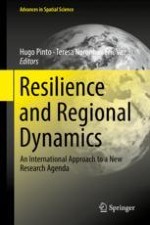2018 | OriginalPaper | Chapter
13. Conclusion: Resilience—What’s Next?
Authors : Eric Vaz, Teresa de Noronha, Hugo Pinto
Published in: Resilience and Regional Dynamics
Publisher: Springer International Publishing
Activate our intelligent search to find suitable subject content or patents.
Select sections of text to find matching patents with Artificial Intelligence. powered by
Select sections of text to find additional relevant content using AI-assisted search. powered by
